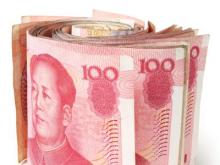By Reza Akhlaghi
In March, China’s National People’s Congress (NPC) and the Chinese People’s Political Consultative Congress (CPPCC), the country’s two legislative bodies, convened in Beijing. This year’s meeting focused on the economic reforms envisioned and pursued by the administration of President Xi Jinping and Premier Li Keqiang. Several initiatives were announced, including the further restructuring of state-owned enterprises (SOEs) and the development of a national consumer credit system.
By reforming its SOEs, China aims to make them more competitive globally and stimulate increased private investment, innovation, and entrepreneurship. The creation of a unified national credit system through the establishment of eight credit-reporting agencies is intended to strengthen the country’s emerging domestic consumer market.
China’s rise as a major global trading partner has led to an ever-wider use of its currency. Currently, one third of the world’s financial institutions use the RMB for payments to China. The RMB now ranks as the world’s 5th most traded currency. The Chinese leadership has been pursuing a policy of internationalizing the RMB by supporting the currency’s offshore trading, implementing foreign exchange (FX) reforms, and launching RMB clearing centers in key global financial hubs, such as Hong Kong, London, Frankfurt, Singapore, and, most recently, Toronto.
As early as 2016, the RMB could become part of a basket of global reserve currencies. Its status is going to be reviewed by the International Monetary Fund (IMF) for inclusion in the Special Drawing Right (SDR), an international reserve asset created by the IMF in 1969 to supplement the existing official reserves of member countries.
Meanwhile, central banks in many countries have been increasingly allocating RMB to their baskets of reserve currencies, even though the IMF has not yet declared the RMB an official reserve currency.
As China continues to implement fiscal reforms and modernize key aspects of its domestic consumer market, its middle class, with a rising spending power, has emerged as an influential factor in the country’s next stage of economic development. Its influence will be felt with the internationalization of the RMB.
For Chinese companies turning their focus to the country’s growing consumer market, being able to trade with international partners in RMB can bring lucrative rewards. They should see more international demand to do business with them as they come to be regarded as conduits to the country’s massive consumer market. Both sides of the transaction will benefit, as conducting business in RMB can involve lower financing and transaction costs, reduced exposure to FX volatility, improved access to Chinese suppliers, and greater purchasing power by Chinese companies exporting in their own currency.
This should lead to new opportunities, as well as to the development of new products and services denominated in RMB. With improved purchasing power, Chinese companies can import more products and services to meet new demand from the country’s rising middle class. Over the next decade, China’s middle class is expected to grow in tandem with the country’s continued economic expansion. The implementation of a series of labor-market policies should result in higher wages, greater employment rates, and stronger household income growth. China’s consumption dynamics will undergo a radical transformation and reach a level of sophistication not seen in other developing markets with a similar-sized middle class.
The next great competition in the global economy will be over access to China’s middle-class consumers, and to understand their consumption and buying behaviors. What will make competition particularly intense is the ability of those consumers to buy and sell products and services in their own currency.

